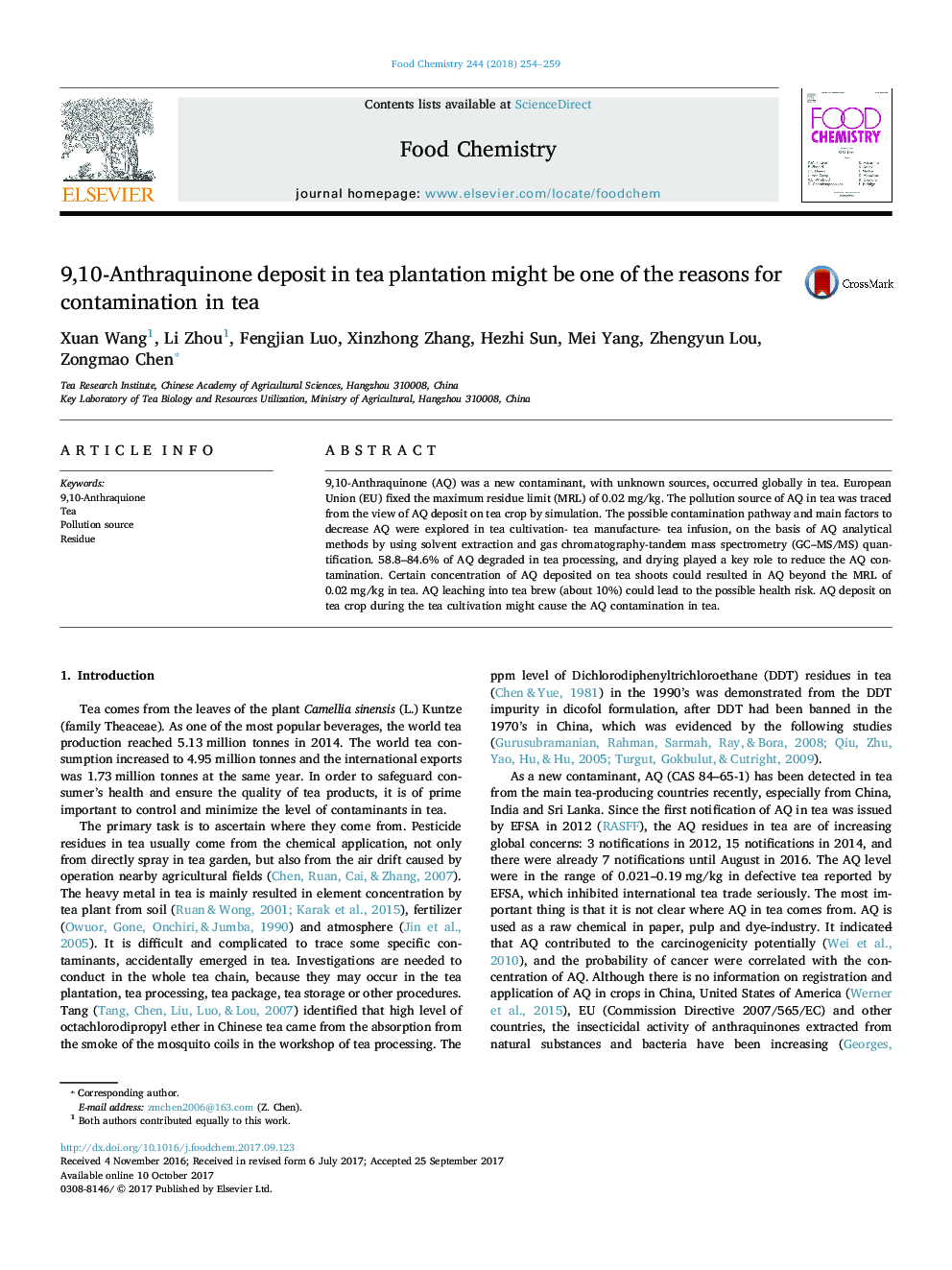| Article ID | Journal | Published Year | Pages | File Type |
|---|---|---|---|---|
| 5132409 | Food Chemistry | 2018 | 6 Pages |
â¢Pollution source of AQ in tea was traced from the view of AQ deposit.â¢AQ transfer in tea cultivation-tea manufacture-tea infusion was evaluated.â¢Low level of AQ deposit on tea crop may result in AQ contamination in tea.â¢Drying procedure played a key role to reduce the AQ residue.
9,10-Anthraquinone (AQ) was a new contaminant, with unknown sources, occurred globally in tea. European Union (EU) fixed the maximum residue limit (MRL) of 0.02Â mg/kg. The pollution source of AQ in tea was traced from the view of AQ deposit on tea crop by simulation. The possible contamination pathway and main factors to decrease AQ were explored in tea cultivation- tea manufacture- tea infusion, on the basis of AQ analytical methods by using solvent extraction and gas chromatography-tandem mass spectrometry (GC-MS/MS) quantification. 58.8-84.6% of AQ degraded in tea processing, and drying played a key role to reduce the AQ contamination. Certain concentration of AQ deposited on tea shoots could resulted in AQ beyond the MRL of 0.02Â mg/kg in tea. AQ leaching into tea brew (about 10%) could lead to the possible health risk. AQ deposit on tea crop during the tea cultivation might cause the AQ contamination in tea.
